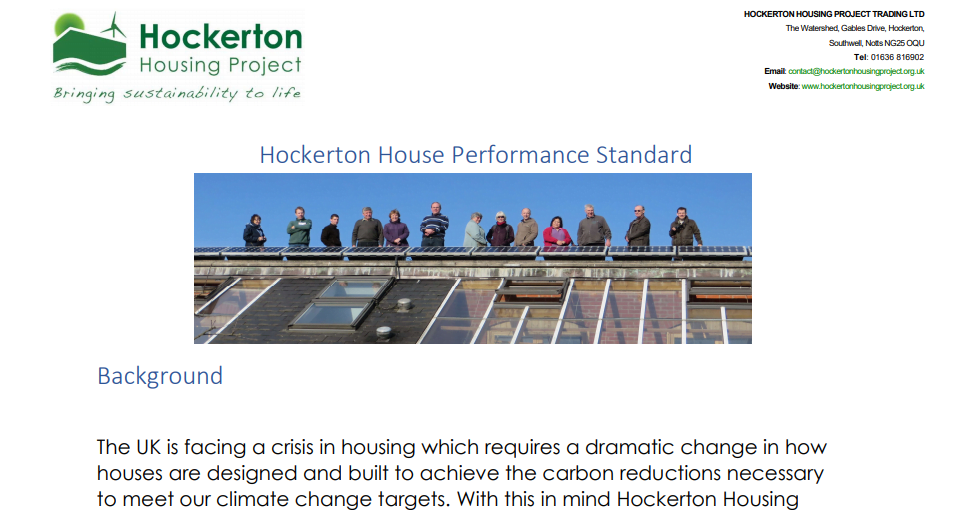Hockerton Housing Project is excited to announce it has released its own housing standard fit for the future world of zero carbon houses. It is called the Hockerton House Performance Standard and outlines the requirements that houses will need to be built to in order to achieve a sustainable low impact world. Unlike the Passivhaus standards these are free to use and go far beyond what Passivhaus can achieve. They are there to inspire!
Minister for Housing Nick Raynsford visiting Hockerton Housing Project
Since the visit of the Minister for Housing Nick Raynsford at our opening we have been pushing the boundaries of construction. Our latest development of nine houses is taking shape with the walls going up in Howgate Close, Eakring with a predicted SAP score of 142! Jerry Harrall is delivery the project and writing Howgate Close, blog.
The UK is facing a crisis in housing which requires a dramatic change in how houses are designed and built to achieve the carbon reductions necessary to meet our climate change targets. With this in mind we are proposing standards of construction to inspire people to construct very high-performance houses factoring in embodied energy and within sustainable communities. The lifestyle of the people living in houses affects emissions of carbon significantly so cannot be ignored. A well-engineered house and designed community space will help inspire them to reduce their carbon emissions. Inspiration can lead to action given the right environment.
The imbedded House Performance Standards are performance based to allow individual designers and builders to create their own solutions. This should encourage creativity and enable future solutions to be incorporated in the finished houses.
These performance standards have been inspired by Dr Robert Vale, Professor Brenda Vale, Mr Nick Martin and the practical experience of the members of Hockerton Housing Project since 1993. They have drawn on General Information Report 53 produced for the Department of Environment Transport and the Regions by the Building Research Energy Conservation Support Unit. More recently the Leti “Net Zero Operational Carbon” targets have pushed us!
The Hockerton House Performance Standards
There are five subsidiary standards:
- Hockerton-Zero,
- Hockerton-Heat,
- Hockerton-Embodied
- Hockerton-Water,
- Hockerton-Community
Combining these five standards will create houses fit for the future.
If you are a lecturer or student and want to design your own tour find out more here.





